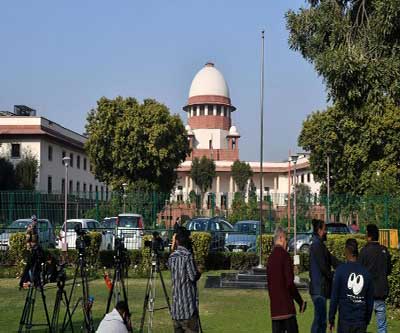Date: 20/03/2023
Relevance: GS-2: Indian Constitution - historical underpinnings, evolution, features, amendments, significant provisions and basic structure.
Key Phrases: Supreme Court, Rameshwar Prasad Case, Maharashtra Crisis, Governor, Assembly, President’s Rule, Election Commission of India, Constitution Bench.
Context:
- In an oral observation, the Supreme Court Bench hearing the Shiv Sena political crisis cases asked whether the Governor can call for a floor test in case of internal party dissatisfaction.
- The Solicitor General referred to a 2005 Supreme Court ruling in Rameshwar Prasad v Union of India to respond to the question raised by the Supreme Court Bench during the hearing of cases related to the Shiv Sena political crisis.
Background of the Case:
- In February 2005, Bihar faced a hung Legislative Assembly, with
no party or alliance winning the required majority of the House.
- The Governor held several meetings with political parties and determined that no party or alliance could attain a majority due to indecisiveness.
- In March 2005, the Governor recommended to the President the
imposition of President's Rule in Bihar under Article 365, and keeping the
Assembly in "suspended animation," meaning it could not conduct any
business but would not be dissolved.
- The next day, two notifications were issued, one imposing President's Rule on Bihar and the other transferring the powers of the President to the Governor, subject to his final control and superintendence.
Reports Sent By the Governor to the President:
- The first report warned of "serious attempts to cobble a majority" in Bihar's hung Legislative Assembly through various means such as allurements like posts and money, and recommended holding fresh elections to prevent distortion of democracy.
- The second report sent less than a month later, recommended dissolving the existing Assembly and conducting new elections.
- The Union Cabinet promptly forwarded the reports to the President for
his assent, which is necessary to dissolve an Assembly and hold fresh
elections.
- Following the dissolution of the Bihar Assembly, political parties organized widespread protests and strikes in the state.
Rameshwar Prasad vs Union of India:
- Rameshwar Prasad along with three other MLAs in the defunct House
filed a petition before the Supreme Court challenging the constitutionality
of the Presidential Proclamation.
- They asked that the dissolution of the Assembly be deemed "unconstitutional," while a couple of other petitions were also filed in the same matter.
- However, while the petitions were still pending before the Supreme
Court, the Election Commission of India announced fresh elections in
Bihar.
- This created a challenging situation, as the outcome of the election could potentially complicate matters, while the Supreme Court was yet to decide on the matter.
The Supreme Court Delivers Its Verdict:
- A Constitution Bench led by then Chief Justice of India declared the
President’s Proclamation dissolving the Bihar Assembly as unconstitutional.
- However, due to the impending elections, the court chose not to reinstate the Assembly.
- The SC ruled that the Governor should not be involved in
controversies like disqualification of Assembly members.
- The SC ruled that Article 192(2) and Article 103(2) provide for the Governor and Members of Parliament to obtain the opinion of the Election Commission and act according to such opinion in the constitutional scheme of things.
- The Supreme Court stated that it couldn't remain a passive
spectator and watch the subversion of the Constitution.
- It observed that the Union Council of Ministers should have verified the facts before accepting the Governor's report as a gospel truth.
- The court observed that the Governor has misled the Council of Ministers, leading to aid and advice being given by the Council of Ministers to the President, resulting in the issue of the impugned Proclamation.
- The court rejected the Governor's action as mere pretence and stated that the real purpose was to keep a political party from claiming the formation of the government.
Conclusion:
- Recently the SC expressed concern over Maharashtra Governor using
his powers to order a floor test that led to then Chief Minister Uddhav
Thackeray's resignation.
- During the proceedings, a five-judge Bench headed by CJI enquired whether the Governor could intervene by calling for a floor test in case of internal dissatisfaction within a party.
- A Justice, who was part of the Bench, pointed out that in Rameshwar
Prasad vs Union of India, the government was never formed.
- However, in the present situation, the government in Maharashtra had been there for more than three-and-a-half years.
- This prompted the CJI to distinguish between the decision in
Rameshwar Prasad and the present case.
- “The Governor cannot refuse the formation of a new government and override the majority because of his subjective assessment. This is a government which is legitimately formed,” he said.
Source: The Indian Express
Mains Question:
Q. Explain the role and powers of the Governor in the imposition of President's rule in a state under Article 356 of the Constitution of India. How can the Governor's actions be subjected to judicial review? (250 words).







